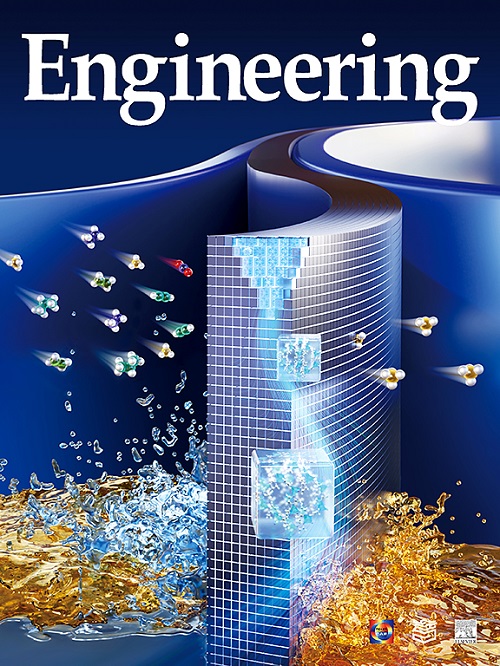Adsorption-Driven Interfacial Interactions: The Key to Enhanced Performance in Heterogeneous Advanced Oxidation Processes
IF 10.1
1区 工程技术
Q1 ENGINEERING, MULTIDISCIPLINARY
引用次数: 0
Abstract
Current research on heterogeneous advanced oxidation processes (HAOPs) predominantly emphasizes catalyst iteration and innovation. Significant efforts have been made to regulate the electron structure and optimize the electron distribution, thereby increasing the catalytic activity. However, this focus often overshadows an equally essential aspect of HAOPs: the adsorption effect. Adsorption is a critical initiator for triggering the interaction of oxidants and contaminants with heterogeneous catalysts. The efficacy of these interactions is influenced by a variety of physicochemical properties, including surface chemistry and pore sizes, which determine the affinities between contaminants and material surfaces. This disparity in affinity is pivotal because it underpins the selective removal of contaminants, especially in complex waste streams containing diverse contaminants and competing matrices. Consequently, understanding and mastering these interfacial interactions is fundamentally indispensable not only for improving process efficiency but also for enhancing the selectivity of contaminant removal. Herein, we highlight the importance of adsorption-driven interfacial interactions for fundamentally elucidating the catalytic mechanisms of HAOPs. Such interactions dictate the overall performance of the treatment processes by balancing the adsorption, reaction, and desorption rates on the catalyst surfaces. Elucidating the adsorption effect not only shifts the paradigm in understanding HAOPs but also improves their practicality in water treatment and wastewater decontamination. Overall, we propose that revisiting adsorption-driven interfacial interactions holds great promise for optimizing catalytic processes to develop effective HAOP strategies.
吸附驱动的界面相互作用:提高非均相高级氧化过程性能的关键
目前对异质高级氧化工艺(HAOPs)的研究主要强调催化剂的迭代和创新。为了调节电子结构和优化电子分布,从而提高催化活性,人们付出了巨大的努力。然而,这种关注往往掩盖了 HAOPs 的一个同样重要的方面:吸附效应。吸附作用是引发氧化剂和污染物与异相催化剂相互作用的关键启动因素。这些相互作用的效果受到各种物理化学特性的影响,包括表面化学性质和孔隙大小,它们决定了污染物与材料表面之间的亲和力。这种亲和力的差异至关重要,因为它是选择性去除污染物的基础,尤其是在含有不同污染物和竞争基质的复杂废物流中。因此,从根本上说,了解和掌握这些界面相互作用不仅对于提高工艺效率,而且对于提高污染物去除的选择性都是不可或缺的。在此,我们强调吸附驱动的界面相互作用对于从根本上阐明 HAOP 催化机理的重要性。这种相互作用通过平衡催化剂表面的吸附、反应和解吸速率,决定了处理过程的整体性能。阐明吸附效应不仅能改变对 HAOPs 的理解模式,还能提高其在水处理和废水净化中的实用性。总之,我们认为重新审视吸附驱动的界面相互作用为优化催化过程、开发有效的 HAOP 策略带来了巨大希望。
本文章由计算机程序翻译,如有差异,请以英文原文为准。
求助全文
约1分钟内获得全文
求助全文
来源期刊

Engineering
Environmental Science-Environmental Engineering
自引率
1.60%
发文量
335
审稿时长
35 days
期刊介绍:
Engineering, an international open-access journal initiated by the Chinese Academy of Engineering (CAE) in 2015, serves as a distinguished platform for disseminating cutting-edge advancements in engineering R&D, sharing major research outputs, and highlighting key achievements worldwide. The journal's objectives encompass reporting progress in engineering science, fostering discussions on hot topics, addressing areas of interest, challenges, and prospects in engineering development, while considering human and environmental well-being and ethics in engineering. It aims to inspire breakthroughs and innovations with profound economic and social significance, propelling them to advanced international standards and transforming them into a new productive force. Ultimately, this endeavor seeks to bring about positive changes globally, benefit humanity, and shape a new future.
 求助内容:
求助内容: 应助结果提醒方式:
应助结果提醒方式:


